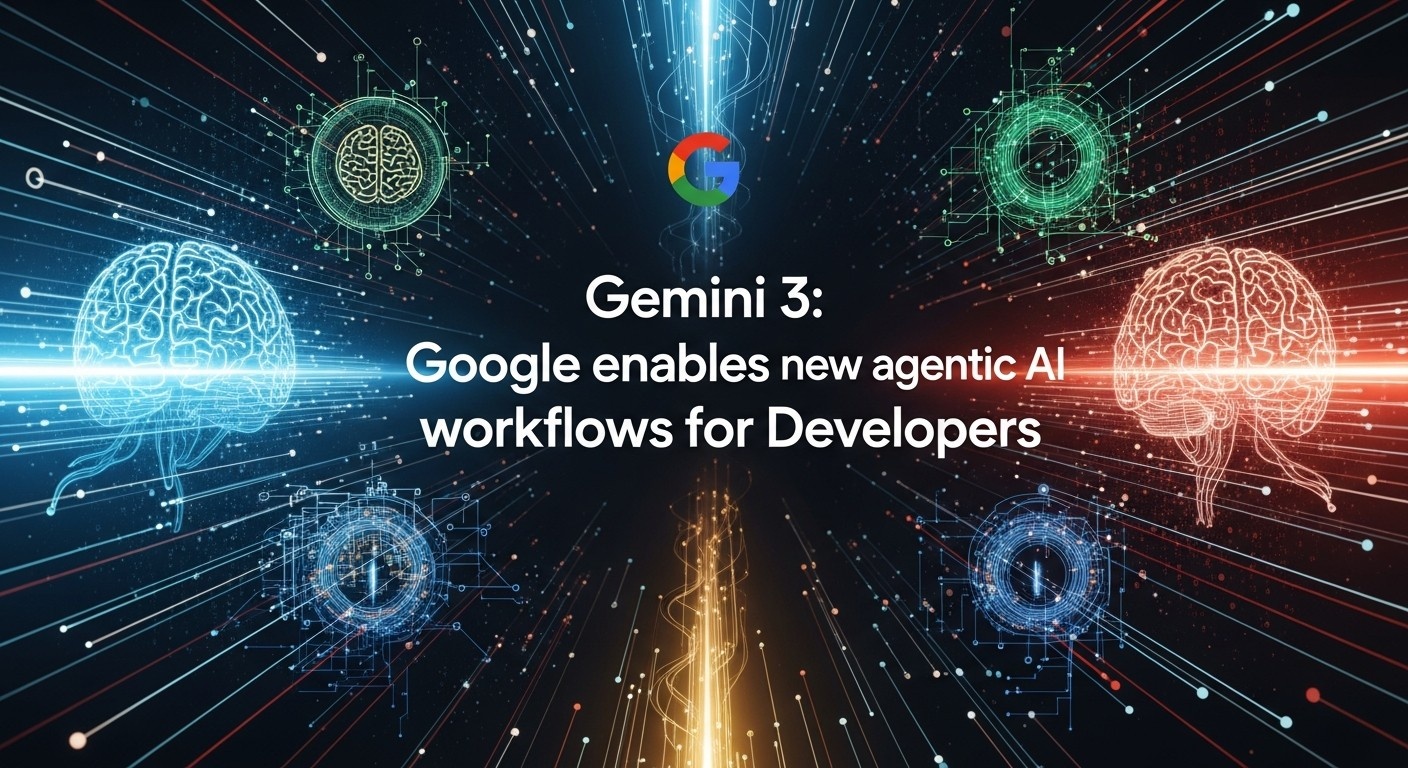Gemini 3 Unlocks New Agentic AI Workflows for Developers

Google has unveiled Gemini 3, a major upgrade to its AI ecosystem that enables developers to build advanced agentic workflows—systems where AI models can reason, plan, and take actions across tools and data. Announced this week, the update marks one of Google’s strongest pushes into next-generation AI automation. For developers, it signals a shift from simply prompting models to orchestrating AI-driven processes at scale.
Background: The Push Toward Agentic AI
Over the past year, AI models have evolved from text-generation tools into systems capable of performing tasks across applications and APIs. Google has been steadily building toward this transition through multimodal improvements, better context handling, and integration with its cloud ecosystem. With rising demand for autonomous AI systems that can handle workflow-heavy tasks—like research automation, code refactoring, and multi-step data analysis—Google positioned Gemini 3 as its flagship answer.
Key Developments: What Gemini 3 Introduces
Gemini 3 expands the Gemini model family with features explicitly designed for developers building task-oriented applications. Key highlights include:
- Agentic Planning: The model can break down user objectives into structured plans and execute them step-by-step.
- Tool Use APIs: Developers can plug in proprietary tools, external APIs, or internal systems, allowing Gemini to operate like a programmable agent.
- Memory and State Awareness: Gemini 3 can maintain context across long-running tasks, a critical requirement for workflow automation.
- Improved Multimodality: Enhanced video, image, and document understanding strengthens its value for enterprise-grade use cases.
A Google spokesperson emphasized that the aim is to make Gemini “not just an assistant, but a capable operator that understands tasks deeply and completes them reliably.”
Technical Breakdown: What ‘Agentic’ Means Here
Agentic AI refers to models that don’t just respond—they act. Instead of waiting for step-by-step instructions, Gemini 3 can:
- Analyze a goal
- Create a plan
- Decide which tools to use
- Execute workflows
- Evaluate results and adjust
Think of it as upgrading from a smart search engine to a junior developer who can follow instructions, use the right software, and report back with deliverables.
Implications: Why Gemini 3 Matters
For developers, Gemini 3 significantly reduces the overhead of building automation tools or productivity apps. Enterprises can leverage it for:
- Automated report generation
- Live data processing
- Multi-step business workflows
- Code review and integration tasks
- Customer support automation
For the broader industry, it signals a competitive escalation among major AI players, pushing faster innovation in agent-based architectures.
Challenges & Limitations
Despite its promise, Gemini 3 still faces several challenges:
- Reliability in real-world APIs can vary, depending on system integrations.
- Security concerns arise when giving AI control over tools and internal services.
- Cost and complexity may increase for large-scale deployments.
- Human oversight remains critical to prevent missteps in automated decision-making.
Experts caution that agentic systems must be deployed with guardrails, monitoring, and ethical checks.
Future Outlook
Google is expected to roll out enhanced SDKs, better debugging tools for agentic workflows, and deeper integrations with Google Cloud services in the coming months. The company also hinted at plans for more multimodal agent features, including real-time video-based decision-making. Developers can expect richer APIs and new templates that simplify building production-ready AI agents.
Conclusion
Gemini 3 represents a meaningful step forward in the evolution of AI from predictive models to autonomous digital workers. As developers adopt these new agentic capabilities, the industry may see a shift toward applications that think, plan, and execute tasks—reshaping how businesses build and deploy intelligent software.